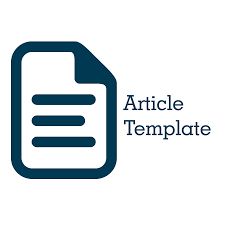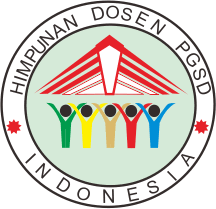Analisis penerapan prinsip Mayer pada multimedia digital dalam pembelajaran matematika di kelas IV sekolah dasar
Abstract
The world of education has undergone significant changes due to the development of information and communication technology. One impact of these changes is the use of digital multimedia in the learning process. This study aims to describe and understand the application of Mayer's principles in digital multimedia for mathematics learning in Grade IV of SD Muhammadiyah Plus Salatiga in the academic year 2023/2024. This research used a qualitative approach with a case study method. Data were collected through interviews, observations, and documentation. The subjects were teachers and Grade IV students at SD Muhammadiyah Plus Salatiga. The results obtained regarding the application of Mayer's cognitive multimedia principles in digital multimedia for learning in Grade IV of SD Muhammadiyah Plus Salatiga revealed ten principles applied in digital multimedia. These principles are contiguity, spatial contiguity, temporal contiguity, coherence, redundancy, signaling, segmenting, multimedia, personalization, and interactivity.
Keywords
Full Text:
PDFReferences
[1] I. G. S. Suci, I. Indrawan, H. Wijoyo, and F. Kurniawan 2020 Transformasi Digital dan Gaya Belajar. (Kab. Banyumas: CV. Pena Persada)
[2] I. Indrawan, H. Wijoyo, I. M. wiguna, and E. Wardani 2020 Media Pembelajaran Berbasis Multimedia. (Kab. Banyumas: CV. Pena Persada)
[3] D. Z. A. Syarif, J. Joharman, and R. Rokhmaniyah 2020 Penerapan Pendekatan Saintifik dengan Media Konkret dalam Peningkatan Kemampuan Memecahkan Masalah pada Matematika tentang Bangun Ruang pada Siswa Kelas IV SDN 2 Klapasawit Tahun Aajaran 2017/2018 Kalam Cendekia: Jurnal Ilmiah Kependidikan, 7(2)
[4] H. Fikri and A. S. Madona 2018 Pengembangan Media Pembelajaran Berbasis Multimedia Interaktif, 1st ed. (Yogyakarta: Penerbit Samudra Biru)
[5] E. Wulansari 2023 Penerapan Model Quantum Teaching dengan Multimedia untuk Meningkatkan Kemampuan Berkomunikasi dan Hasil Belajar Siswa Kelas V SDN 1 Kuwayuhan Tahun Ajaran 2022/2023 Pendidikan Guru Sekolah Dasar, Universitas Sebelas Maret, Surakarta
[6] R. E. Mayer 2014 The Cambridge Handbook of Multimedia Learning. (Cambridge University Press)
[7] H. Saeverot and G.-E. Torgersen 2016 Individual Differences in Visual and Verbal Channel Capacity and Learning Outcome from Film and Text Creat Educ, 7(18), 2845–2867
[8] G. Kartal 2010, Does Language Matter in Multimedia Learning? Personalization Principle Revisited J Educ Psychol, 102 (3), 615–624
[9] Sugiyono 2019 Metode Penelitian Kualntitatif Kualitatif dan R&D, 2nd ed. (Bandung: ALFABETA)
[10] R. C. Clark, R. E. Mayer, and W. Thalheimer 2001 E-learning and the Science of Instruction: Proven Guidelines for Consumers and Designers of Multimedia Learning Performance Improvement, 42 (5), 41–43
[11] S. D. Craig, J. Twyford, N. Irigoyen, and S. A. Zipp 2015 A Test of Spatial Contiguity for Virtual Human’s Gestures in Multimedia Learning Environments Journal of Educational Computing Research, 53 (1), 3–14
[12] S. Paek, D. L. Hoffman, and A. Saravanos 2017 Spatial Contiguity and Incidental Learning in Multimedia environments British Journal of Educational Technology, 48 (6), 1390–1401
[13] S. Ge, C. Hai Leng, and S. M. Baharudin 2022 The Effect of Multimedia and Temporal Contiguity Principles on Students’ Attitude and Retention in Learning Japanese Language International Journal of Chinese Education, 11 (2)
[14] R. Moreno and R. Mayer 2007 Interactive Multimodal Learning Environments Educ Psychol Rev, 19 (3), 309–326
[15] R. E. Mayer and L. Fiorella 2014 Principles for Reducing Extraneous Processing in Multimedia Learning: Coherence, Signaling, Redundancy, Spatial Contiguity, and Temporal Contiguity Principles in The Cambridge Handbook of Multimedia Learning, Cambridge University Press, 279–315
[16] B. Fenesi, E. Kramer, and J. A. Kim 2016 Split‐Attention and Coherence Principles in Multimedia Instruction Can Rescue Performance for Learners with Lower Working Memory Capacity,” Appl Cogn Psychol, 30 (5), 691–699
[17] P. Maharani 2018 Pengembangan Multimedia Pembelajaran Interaktif Menggunakan Construct 2 tentang Suhu dan Kalor untuk Siswa Kelas X SMA Universitas Islam Negeri Raden Intan Lampung, Lampung
[18] H. T. Hapsari, R. Riyadi, and T. Budiharto 2023 Pengembangan Media Pembelajaran Berbasis E-flipbook melalui Canva pada Materi Satuan Waktu untuk Peserta Didik Kelas III Sekolah Dasar Didaktika Dwija Indria, 11 (4)
[19] S. Kalyuga and J. Sweller 2014 The Redundancy Principle in Multimedia Learning in The Cambridge Handbook of Multimedia Learning, Cambridge University Press, 247–262
[20] W. Wulansari, M. Musta’in, and F. Vifri Ismiriyam 2022 Peningkatan Konsentrasi Belajar pada Siswa melalui Pemanfaatan Metode Belajar Sensorimotor dengan Kombinasi Senam Latih Otak Jurnal Pengabdian Perawat, 1 (2), 50–57
[21] T. van Gog 2014 The Signaling (or Cueing) Principle in Multimedia Learning in The Cambridge Handbook of Multimedia Learning. (Cambridge University Press), 263–278
[22] E. Kutbay 2016 An Investigation of Modality, Redundancy and Signaling Effects in Multimedia Learning with Abstract and Concrete Representation Bogazici University
[23] S. Sahronih, A. Purwanto, and M. S. Sumantri 2019 The Effect of Interactive Learning Media on Students’ Science Learning Outcomes in ACM International Conference Proceeding Series, Association for Computing Machinery, 20–24
[24] R. Mehta, C. Santacruz, and B. Lischy 2024 A Systematic Literature Review on The Intersection of Experiential and Multimedia Learning with Virtual Reality and Its Implixation Aresty Rutgers Undergraduate Reserch Journal, 1 (5), 5–6
[25] A. Abdul Mutalib and Y. Jaafar 2018 Segmenting Principle Engages Pre-School Children with Multimedia Learning Material The Journal of Social Sciences Research, 791–800
[26] C.-S. Cheah 2022 The importance of multimedia elements in learning and the impact of redundancy principle in developing effective multimedia learning materials: a literature review Journal of Educational Sciences & Psychology, 12 (2), 3–12, 2022
[27] K. Dawson et al. 2021 The Influence of the Multimedia and Modality Principles on the Learning Outcomes, Satisfaction, and Mental Effort of College Students with and without Dyslexia Ann Dyslexia, 71 (1), 188–210
[28] C. Schrader, M. Reichelt, and S. Zander 2018 The Effect of the Personalization Principle on Multimedia Learning: the role of Student Individual Interests as a Predictor Educational Technology Research and Development, 66 (6), 1387–1397
[29] R. E. Mayer 2014 Cognitive Theory of Multimedia Learning in The Cambridge Handbook of Multimedia Learning, Cambridge University Press, 43–71
[30] J. Digout and H. El Samra 2023 Interactivity and Engagement Tactics and Tools in Governance in Higher Education, Cham: Springer Nature Switzerland, 151–169
[31] R. N. Udin 2023 Penggunaan multimedia interaktif untuk meningkatkan keterampilan pemecahan masalah geometri peserta didik kelas v sekolah dasar Didaktika Dwija Indria, 11 (1)
[32] M. A. Umairoh, S. Marmoah, and Hartono 2022 Penggunaan Multimedia Interaktif untuk Meningkatkan Pemahaman Konsep Keliling dan Luas Bangun Datar pada Peserta Didik Kelas IV Sekolah Dasar Didaktika Dwija Indria, 7 (1), 44–49
Refbacks
- There are currently no refbacks.



